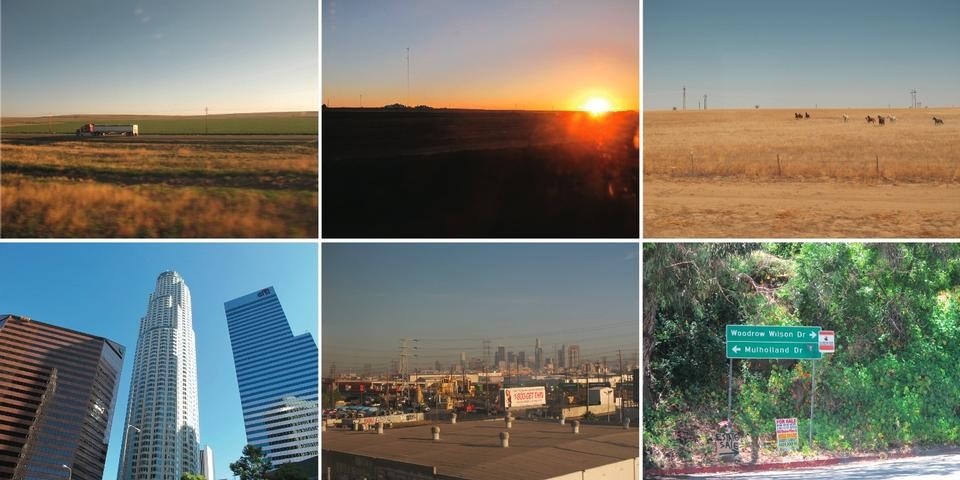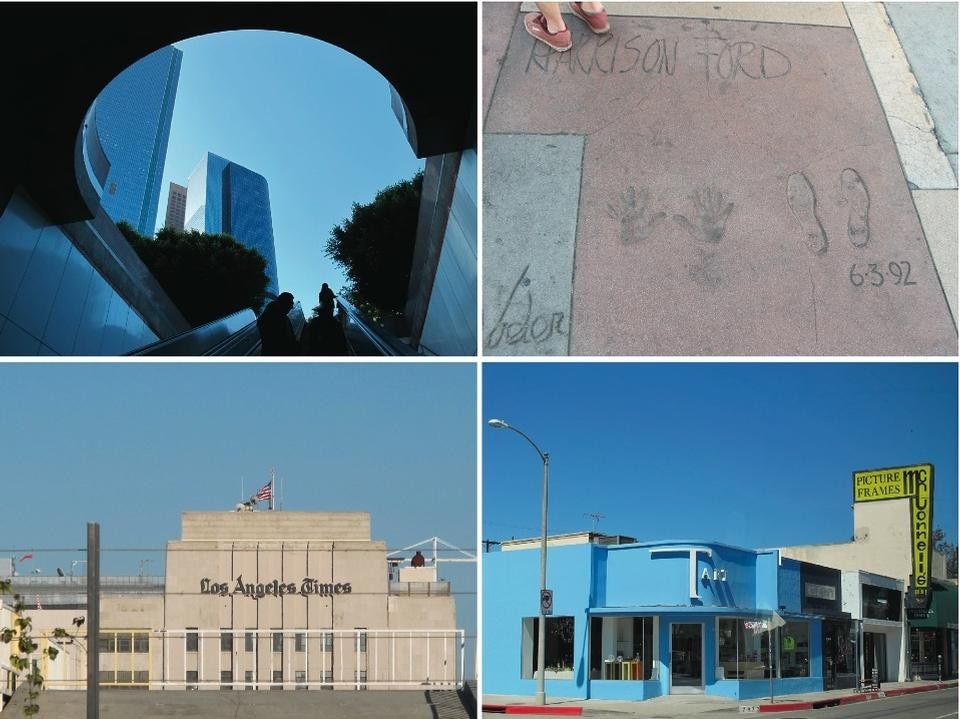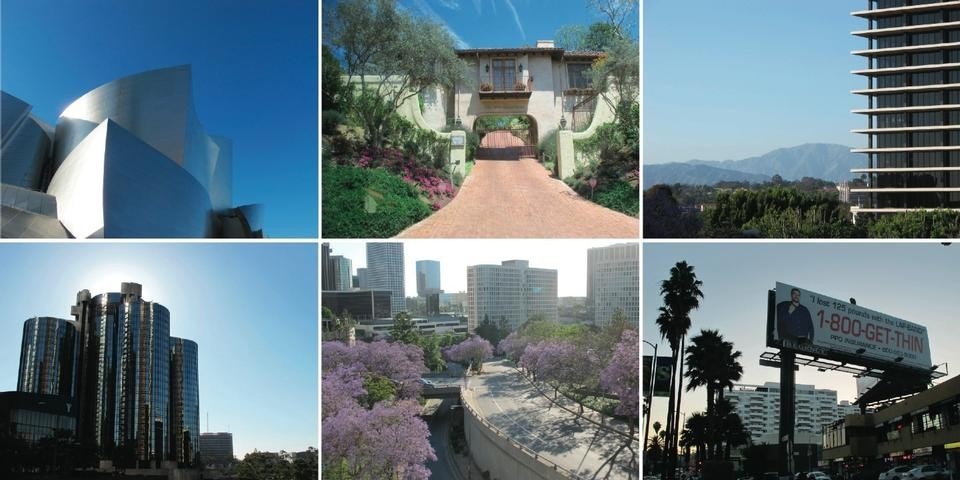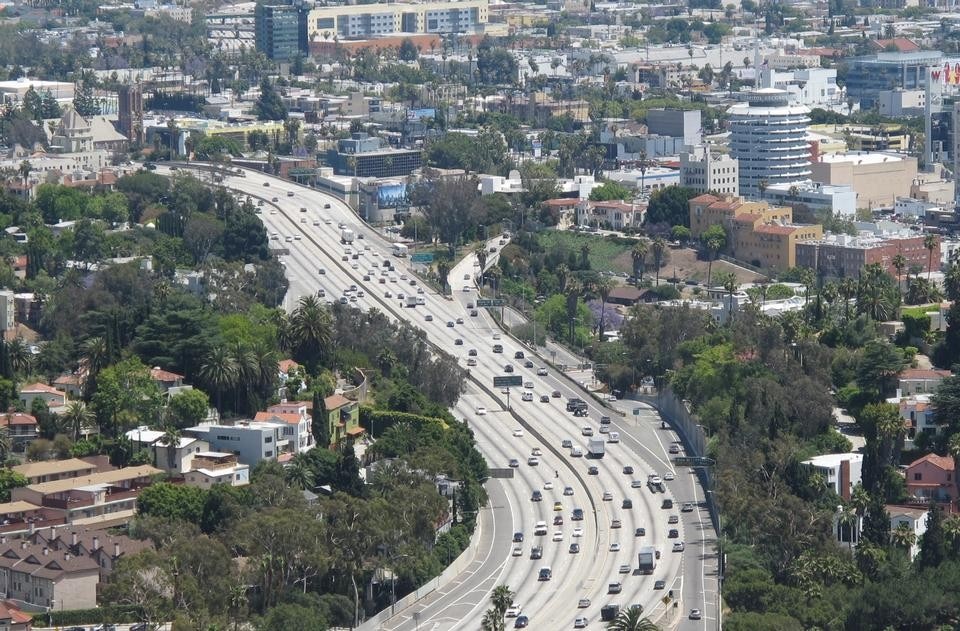I was sad to leave Detroit. It felt like we'd only just begun to scratch beneath the stereotypes of the Motor City, only just started to understand what made it tick. The city had blown my mind but it was time to go west in one push to California, to what I imagine would be a very different America.
The journey began with a return to Union Station Chicago, the centre of the Amtrak network. Trains were being called to New Orleans, Milwaukee, Seattle and all over. Staff were scuttling about, checking passengers into the correct seats and escorting old ladies down the platform on golf buggies. I like points of arrival and departure. There's something about being at a place, an edge, where you can reach anywhere, that really appeals. There's always a sense of great anticipation, though at the same time today's airports and train stations are humdrum places. In many ways they're 'non-places', particularly airports.
As we left Chicago the sun was scorching, the train slunk out of town at a snail's pace (as ever). Trundling past warehousing and tenements, the skyscrapers downtown slowly fading into the distance, the lengthiest journey of my whole trip had begun. In fact, this is probably the longest time I've spent in one small space in my entire life.
After creaking through the affluent neighbourhoods on the city's west side, past swimming pools, picture-postcard main streets, and immaculate gardens with stars and stripes billowing in the breeze, we hit the plains. And Christ they're big. Huge, endless, green and kind of terrifying. There's few trees, with just the odd farm, grain silo and electricity wire to punctuate the landscape. Being somewhere of the scale, of that exposure, it's unnerving. It makes you feel small.
We pass through Illinois and the south-eastern corner of Iowa, before arriving in Kansas City, Missouri before midnight. Maybe I watched the Wizard of Oz a little too much as a child but I didn't for a second think that a) it would be a city of towering buildings and neon, and b) it wouldn't actually be in Kansas. That aside we stop and stretch our legs before covering the Sunflower State through the night.
We're not in Kansas anymore as we wake up the next morning, and the landscape seems gradually drier. Buffalo and horses gallop alongside the train through scorched fields of beige, yellow and cream. There's a whole new architectural language out here. A mixture of eye-catching typography, from the U-HAUL of hired vans to the faded motels that line the fabled Route 66. The fence posts falling over and leading the eye to the make-do-and-mend aesthetic of using what's there. A pragmatic approach of using everything from scrap tyres to corrugated metal to construct what you need to survive the elements.

It's this aridity that leads me to think about questions of sustainability in this kind of environment. I remember learning at school about the newly prosperous Sunbelt cities like Phoenix, Albuquerque and Tucson, about how they were the future of urban America with their sunshine, swimming pools and shimmer. But I just wonder how they can be sustained in a climate of increasing scarcity? Are they sheer folly? Will these oases of prosperity and wealth in the desert really stand the test of time? Or similarly to Dubai, will they be looked upon as totems of excess and engineering arrogance in years to come?
We crossed the border to California just as the sun was coming up. The hills glowing with the aura of the early morning, first stop San Bernardino. It was 6am and as soon as I realised that we were getting close to LA I couldn't sleep. Finally about the reach the far coast of the country, I was ready to dip my toes in the Pacific.
The train gently snaked past factories, more strip malls and housing estates, with their faux-Spanish details and miraculously well watered verges. The city seemed to spread and spread like no other I'd arrived in so far. Pylons, culverts, mountains and motels stretching all the way to the distant gleaming downtown. Hollywood awaited me. From films, TV, music, myth and gold, this city has always drawn searchers and dreamers. Los Angeles is rooted in the public imagination, but perhaps much misunderstood.
Compared to the more established cities back east, LA has long been derided as a cultural vacuum, a place of airheads, Baywatch babes, and the worship of all things lowbrow. A place apart from the 'mainland' US. But I'm left wondering how a city, with arguably the biggest (pop) cultural output in the world, can be such a vacuum? It is but a different beast. Pop can be lowest common denominator and Britney Spears; but it can also hit the nail so firmly on the head that it leaves you reeling. That's what LA kind of felt like, like a dream in pastel and pastiche, but one that hit the spot.
To read this city you need to look at architecture in a different way, just as Reyner Banham did in the Los Angeles: The Architecture of Four Ecologies. In understanding the sprawl you need to take in everything from the hamburger bars to the freeway structures, rather than the traditional monuments or lack of them. Away from the 'film stars and their private palaces,' Banham talked about LA as being less about an architectural style and more concerned with a frame of mind. The city as a 'mass produced fantasy for people to live in.' The pop aspect of Los Angeles is not just about the zeitgeist and throwaway culture, it inhabits the very fabric of the built environment.
This land of opportunity is surreal. More vivid, more Technicolor, more caricatured, more Disney. We sped in a taxi down the Hollywood Freeway, past palm trees, condos and the rotund modernism of the Capitol Records building. It almost felt like the houses, trees and vistas had been beautifully painted on hoardings, hiding the dingy reality behind. A city as a stage set with your every move captured for your best bits on Big Brother.

Reading Neal Gabler's book Life: The Movie, I got thinking about the city, and a quote from Spanish philosopher Jose Ortega y Gasset really hit it home: "For the truth is that life on the face of it is chaos…the individual is terrified to encounter this frightening reality face to face, and so attempts to conceal it by drawing a curtain of fantasy over it, behind which he can make believe that everything is clear". In this age of personal profiles, status updates, 'likes' and tweets, we're all presenting ourselves as our own brand, editing out the bits we don't like to show ourselves at our best. Maybe Los Angeles is the nth degree of this? Or maybe wider culture has now just finally caught up with the superficiality of LA? A city where face comes first.
But despite this glow, this whitened smile, the city seems to have a remarkable honesty about it. There's a huge gulf between the haves and the have-nots, a clear hierarchy, but at the same time I got the sense of an openness, an up-frontness about the way the city works; it's all on a plate whether you like it or not, even if that plate is shrouded in fantasy and a perfect tan. There's clear elitism at every turn, but it doesn't ever pretend to be anything other than that, you can leave any liberal notions to San Francisco. Here, maybe more than many places in the US, money talks.
Honest it might be, but that doesn't stop there being a distinct closure of public space to the public in its widest form. The urban structures at play here—the compounds, the gates, the walls—fortify this privileged lifestyle for those that can afford it, and keep the masses at bay. Even on somewhere like Hollywood Boulevard the real city dwellers—the kids, the homeless, the common man—are sidestepped to make space for tourists and star-spotters. The city turns its back on those that it houses. Similarly to back in the UK, 'safe' downtown districts portray the city with a sanitised, airbrushed urbanism that belies the real story citywide.
Away from the 'film stars and their private palaces', Banham talked about LA as being less about an architectural style and more concerned with a frame of mind. The city as a 'mass produced fantasy for people to live in.'

Thinking about the how you relate to the city, and comparing it to the apparent collapse of space back in Detroit, I wandered through downtown and came across the Bonaventure Hotel. I was stunned by it's similarity to the shocking Renaissance Center back in Detroit, and it somewhat predictably turned out that it was by the same architect—with all the Blade Runner walkways, lobbies and the impenetrable layout that goes with it.
Detroit might on first look be a very different place to LA, but the fabric and spread of the city, as well as it's total reliance on the car made me think that LA in some ways could be a Detroit of the future. As the oil gradually runs out, how can a city like this be sustained? Could LA adapt? Or is this current American Dream of a city a potential Motor City in waiting?
After looking and exploring Los Angeles I'm heading south to San Diego. If I thought LA had glaring problems beneath its veneer, then I'm not sure what awaits me at the border. Going down through SoCal towards Mexico, I'm intrigued to find out whether the two cities of San Diego and Tijuana have more in common that you might expect. And whether despite what each may think, they actually need each other.
Tom Keeley is an artist and writer whose practice investigates and celebrates the peculiarities of the built environment.


